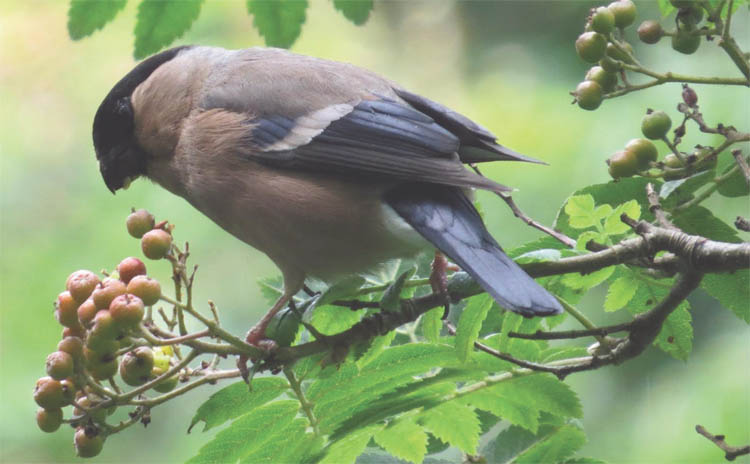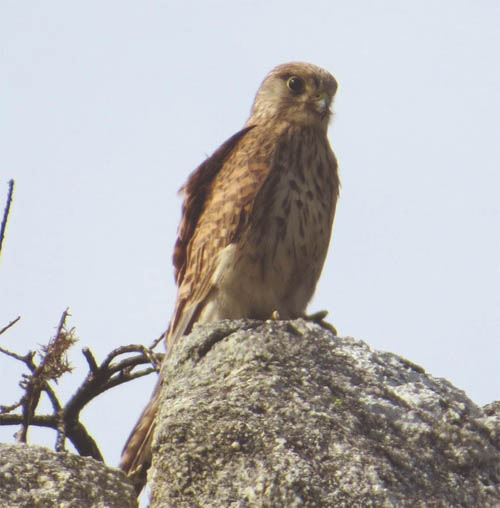| August
/ 2017 - Michael Ryan
|
| It
was a very humid day and the sea at Killiney Bay was mirror calm.
It wasn’t long until Lucy started spotting grasshoppers beside
the path. Nearly every time we find grasshoppers we’d see one
differently coloured to any we’d seen previously. Some are a solid
bright green, some dull brown with copper coloured abdomen, some a solid
rusty colour and a new one we saw was almost translucent but whatever
shade or colour they are, they always seem to blend seamlessly into
the background. They come in a large variety of sizes as well and some
may well be young ones in early larval stages. We know the larger ones
are Common Field Grasshoppers but there could well be other species
there as well. The Killiney Bay side of the hill is often a number of
degrees warmer than anywhere else in the locality and free from cool
strong north westerly winds and that warmer mini climate might account for the profusion of insects and indeed the creatures that feed on them. Not more than three inches long but perfectly formed there were at least four juvenile Common Lizards interspersed amongst the grass. You couldn’t imagine their tiny mouths being big enough to swallow a fully grown grasshopper but there were plenty of other smaller insects for them to feed on. Apparently lizards are totally independent of their mother once they are born and can fend for themselves. |
 Juvenile lizard probably only a few days old but already able to feed itself. Photo: Michael Ryan |
 |
Then a kestrel drifted into view and hovered just above the highest outcrop of rock. Like us it could be looking for lizards as well but its intentions would be to see one, not as a wonder of nature, but as a potential meal. It was a welcome sight though since, although we’d been regularly seeing a kestrel hunting over the winter, it was months since we’d last seen one and we feared the worst. Then yet another kestrel appeared and buzzed the first one. One landed and we saw it was a juvenile as probably was the other one and that might explain why the original bird seemed to hang a little awkwardly and flutter its wings more than you’d expect on a dead calm day, its hovering skills still needing some refining. Kestrel hovering over Dalkey Hill in early July. It seemed to be beating its wings a lot on such a calm day. When it perched we saw it was a juvenile. Photo: Michael Ryan |
|||||
|
|
Juvenile
Kestrel perched |
| Big
Beats |
 In early July the rowan berries weren’t ripe but the female bullfinch was tucking in to them Photo: Michael Ryan |
DALKEY HOME PAGE | DALKEY COMMUNITY COUNCIL | DALKEY HERITAGE COMPANY | CANNONAID S



